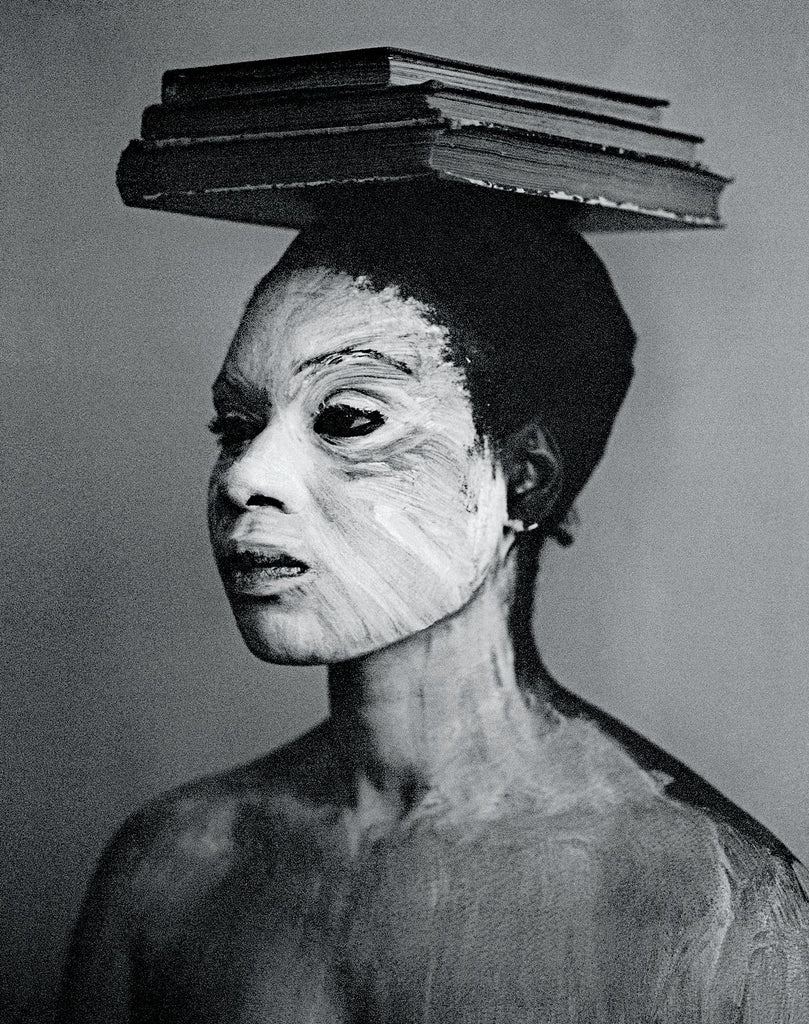It's After The End Of The World
JENKINS, Gerald













London: Art Yard Limited. 2019.
Signed limited, lettered Edition (one of twenty six copies) with a set of four giclée prints. 280x220mm. pp. 344. Illustrated throughout with 306 photographs. Printed on 150gsm Garda Matt Ultra FSC (Italian paper stock). Pale blue cloth hardback with metal foiling and laminate print to both covers, lettered in gilt to spine. Lower cover has a poem from Sun Ra printed in gilt. With publisher's belly band. Housed in a printed cardboard box. Unopened, new and in immaculate condition. The giclée prints, measuring 270x210mm are titled "A Certain Darkness Is Needed To See The Stars". They feature the actress Jodie Turner-Smith. The images are all by the photographer Gerald Jenkins and the text includes work from Sun Ra, Darius James (the author of Negrophobia), Little Annie Bandez (Annie Anxiety), the poet Norman Douglas and the handwritten lyrics by Kain The Poet (Gylan Kain) to his seminal work Black Satin Amazon Fire Engine Cry Baby. Described as a picture novel study of the human spirit in the fantastic / magical and the human soul in the metaphorical and physical in Five Chapters – being Oppression, Rainbows, Mythology, Cosmology, Salvation, this is a stunning book.
It's After The End Of The World takes its title from the 1970 song and album by Sun Ra, the great African American musician, mystic and pioneer of Afrofuturism. Sun Ra died in 1993 and Gerald Jenkins continues to photograph members of The Sun Ra Arkestra, the musician's ever-changing band who perform his work.
It is Sun Ra's Afrofuturism (what has been described as "a musical tradition of performing blackness") that lies behind Jenkins's book. Long interested in Australian Indigenous peoples and the treatment of women of colour, Jenkins turns his attention here to broader questions of race, gender, spirituality, oppression and liberation. For Jenkins, "untainted indigenous relationships with the Universe are so intimate and direct" and it is these that he is exploring here. As Michael Gonzales (a contributor to It's After The End Of The World) said in an interview with Gerald Jenkins in Afropunk, "Jenkins' images shook me, because they were so Afro-Everything — haunting, scary, fly and, most of all, inspiring".
Signed limited, lettered Edition (one of twenty six copies) with a set of four giclée prints. 280x220mm. pp. 344. Illustrated throughout with 306 photographs. Printed on 150gsm Garda Matt Ultra FSC (Italian paper stock). Pale blue cloth hardback with metal foiling and laminate print to both covers, lettered in gilt to spine. Lower cover has a poem from Sun Ra printed in gilt. With publisher's belly band. Housed in a printed cardboard box. Unopened, new and in immaculate condition. The giclée prints, measuring 270x210mm are titled "A Certain Darkness Is Needed To See The Stars". They feature the actress Jodie Turner-Smith. The images are all by the photographer Gerald Jenkins and the text includes work from Sun Ra, Darius James (the author of Negrophobia), Little Annie Bandez (Annie Anxiety), the poet Norman Douglas and the handwritten lyrics by Kain The Poet (Gylan Kain) to his seminal work Black Satin Amazon Fire Engine Cry Baby. Described as a picture novel study of the human spirit in the fantastic / magical and the human soul in the metaphorical and physical in Five Chapters – being Oppression, Rainbows, Mythology, Cosmology, Salvation, this is a stunning book.
It's After The End Of The World takes its title from the 1970 song and album by Sun Ra, the great African American musician, mystic and pioneer of Afrofuturism. Sun Ra died in 1993 and Gerald Jenkins continues to photograph members of The Sun Ra Arkestra, the musician's ever-changing band who perform his work.
It is Sun Ra's Afrofuturism (what has been described as "a musical tradition of performing blackness") that lies behind Jenkins's book. Long interested in Australian Indigenous peoples and the treatment of women of colour, Jenkins turns his attention here to broader questions of race, gender, spirituality, oppression and liberation. For Jenkins, "untainted indigenous relationships with the Universe are so intimate and direct" and it is these that he is exploring here. As Michael Gonzales (a contributor to It's After The End Of The World) said in an interview with Gerald Jenkins in Afropunk, "Jenkins' images shook me, because they were so Afro-Everything — haunting, scary, fly and, most of all, inspiring".
